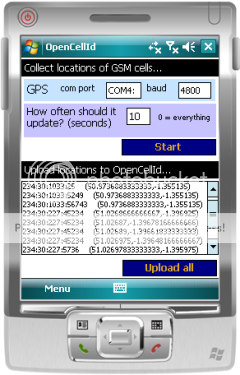My last two Windows Mobile phones have both had GPS, so I’ve played with code to get my location from the GPS a few times. These have generally been quick hacked-together bits and pieces. In all of them, I wrote my own GPS code. I knew that the GPS device would be accessible through a serial port, so I just connected to the relevant COM port and started reading. It’s easy to parse – NMEA sentences are written with an update on each line, in comma-separated strings.
After sharing my OpenCellId client last week, I was encouraged to try rewriting the GPS code for it using the Windows Mobile GPS Intermediate Driver. So I had a quick try. I was vaguely aware of it before, but hadn’t taken a proper look. In this post, I’ll describe briefly what it is, it’s benefits over home-grown hacks such as my own, and share a couple of things that I had to do to get it to work.
 What is this?
What is this? The basic idea is:
The basic idea is: